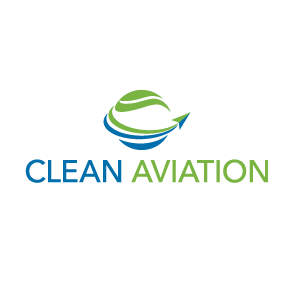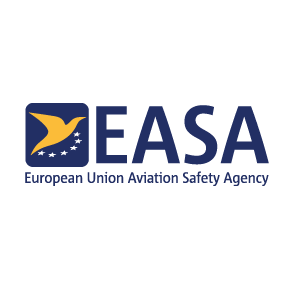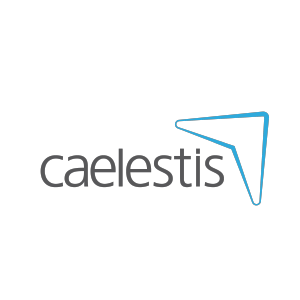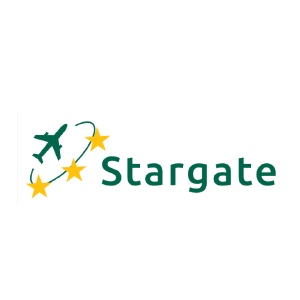Workshops
12th EASN International Conference Technical Sessions
Chalmers University of Technology, Sweden & Cranfield University, UK
The objectives and the expected outcomes are to discuss what sustainability means in the aerospace technology context and to identify technical-, product-, process-, and business- oriented challenges. One expected outcome is to bring together participants’ views on what potential trade-offs to address during the design of sustainable aerospace solutions across and along the air transport system. The workshop is a hands on interactive session in small groups working in parallel on specified tasks and the collective results will be discussed at the end. The outcome will be processed and communicated beyond the workshop.
Chalmers University of Technology, Sweden
The workshop addresses the roadmap towards climate neutrality in aviation with special focus on propulsion technology, considering various approaches. The objective is to lineup industry and academia expectations when investigating/developing technology from conceptualization to demonstration. We will target three overarching questions: What is needed to reach a demo? How can academic research contribute to that? Which other aspects, such as ATM, are to be considered? The workshop will include a panel with members from industry, academia and research institutes. It will also include thematic group discussions and a final summary to be shared with all the participants.
DASSAULT AVIATION




Clean Aviation Joint Undertaking

This special session will feature presentations from all thematic projects launched and funded by the Clean Sky 2 Joint Undertaking.
These projects have been selected from several Thematic Calls addressing targeted low TRL topics in relation to technology gaps for demonstrators / High Level Objectives of Clean Sky 2. 14 Topics have been published over 4 Calls over 3 years (2018-2020) and resulted in 23 projects funded for overall funding of ~ 34 M€ (~2% of CS2 Funding). Most of the projects were tasked with establishing clear State-of-the-Art and a technology roadmap on various topics of interest as precursors to the Clean Aviation ambition. These topics range from advanced low NOx combustion technologies, to hybrid-electric aircraft architecture and components, high aspect ratio wings, or acoustics of distributed propulsion configurations, and the like. All projects have an advisory board which enables any interested parties to follow the project more closely.
Clean Aviation Joint Undertaking

This special session will focus on the presentation of the CS2 Aircraft Concepts. Those have been presented in detail in the 1st Clean Sky 2 TE Global Assessment (https://www.clean-aviation.eu/clean-sky-2-is-well-on-track-says-technology-evaluator-first-global-assessment) and include a set of technologies developed under the ITDs/IADPs of the programme. All aircraft concepts have undergone an update in terms of technology inclusion or architecture choice and a revision loop of environmental performance estimate at the mission level. These updated vehicle models will serve as a basis for the subsequent airport and fleet predictions of the 2nd TE Global Assessment due in 2024, at the closure of the CS2 Programme.






Fraunhofer, Germany
- EcoDESIGN and Life Cycle Assessment
- EcoDESIGN and sustainable engineering
- EcoDESIGN in Clean Aviation

FRAUNHOFER
The European aeronautics industry has a large environmental and socio-economic relevance. Its sustainability, productivity and competitiveness will strongly depend on the innovation steps to make economic value and ecologic value come together. Looking at aviation as circular economy, all life cycle phases must be considered closing the loop from end-of-life to material production.
Engineering for Sustainability of materials, processes and resources, efficient manufacturing, lifetime services and the end-of-life challenge will drive the competitive value in the context of environmental services. The two thematic sessions provide an overview about the ecoDESIGN Transversal Activity in the Clean Sky 2 programme. This includes an outlook on selected activity domains and demonstrations in scope.
It includes as well a critical review of life cycle assessments of aviation systems and indicators to support circular economy implementation in airports.

University of Stuttgart, Germany & IILS mbH, Germany
Description to be provided soon






NLR & DLR
Aviation is undergoing an epochal transformation towards becoming sustainable and achieving climate neutrality in 2050. But how to measure sustainability? How to measure if innovative solutions are sustainable or not?
A valuable tool to answer those questions is Life Cycle Assessment (LCA). Currently LCA is used in many projects and applied for many different cases. Though codified in ISO standards, the various projects use LCA data and assumptions in different ways. Also, LCA focuses on specific impact categories, but it is unclear whether those are relevant for aviation. Last, it is not yet clear whether LCAs would be sufficient to measure sustainability for aviation.
An aviation LCA harmonized approach will solve some of those challenges and provide huge benefits in embedding sustainability in aeronautical (and space) engineering. To address those questions and to start developing this harmonized LCA, DLR and NLR have started a collaboration in 2023.
This session about LCA in aviation wants to address all those questions (and many more) in an interactive way. Presentations will aim to stimulate a dialogue between the participants, on the topics of the session.
After a short introduction of the collaboration between DLR and NLR, experts from the two research establishments will present their work. Then the floor will be open to the participants to share experiences and contribute to the creation of a LCA approach for the entire aviation community.







Clean Aviation













EREA: Association of European Research Establishments in Aeronautics

Urban Air Mobility (UAM) has gained popularity in the past decade as the next revolution for mobility. It promises to be a more efficient and sustainable form of transport, using the unutilized airspace in urban environments to improve services and mobility. It promises to contribute to a climate-neutral air transport system, without compromising on safety and security and while respecting societal concerns about noise and pollution.
But how can UAM system and solutions be designed and demonstrated to be the efficient and sustainable mode of transport it is advertised to be?
In the following three workshops, different aspects are presented, that need to be considered for UAM to become a reality, in the current societal context focused on sustainability, efficiency, and social acceptance. The workshops aim at creating awareness of the challenges embedded in UAM and identifying possible solutions to be investigated further, in a collaborative spirit that includes universities and research establishments, all other aviation stakeholders, and the citizens.
The structure of the UAM Workshops will be on the basis of an interactive conversation among participants which will pave the way forward and will provide food for thought for the next steps. If you want to attend please send your interest to: info@easnconference.eu with short feedback regarding your background and technology Interest (by Monday the 17th of October), so as for the discussion to be adjusted respectively.
More specific information regarding each one of the workshops can be found below:
Workshop I: Scaled Demonstrators • Chairman: Dr.-Ing. Christian Eschmann (DLR)
In aeronautical research, infrastructures make an essential contribution to technology development. For decades, classic large-scale facilities, such as wind tunnels, have been used for this purpose, but recently simulators of all kinds or entire high-performance clusters have also been increasingly employed. Since the construction and maintenance of such facilities are very personnel- and cost-intensive, the European Commission has been pursuing a more efficient and uniform approach for infrastructures across Europe. In the case of UAM, these are primarily UAS (unmanned aerial system) test centers for conducting extensive flight test campaigns. In this context, scaled demonstrators are becoming an increasingly important tool for flight tests, as well as for design and validation.
Scaled demonstrators are scaled-down models of the intended future aircraft and serve as realistic flight test vehicles. However, this is not only about low TLR research, but also about the scaled testing of individual technology components (such as sensors), through sub-systems to entire systems.
In the workshop, the entire spectrum of potential applications for scaled demonstrators will be presented - from current, existing test vehicles to possible future configurations.
Workshop II: Future Energy Sources for Aviation • Chairman: Mr. Marcello Kivel Mazuy (CIRA)
Hybrid Electric Propulsion (HEP), H2 and in general Sustainable Aviation Fuels (SAF) are widely considered as the most promising and sustainable solutions for an energy-efficient, green and quieter aeronautical propulsion. Despite this, several goals must be still achieved to make these technologies viable. In particular, the propulsion system integration into the A/C and the overall feeding system, including new challenges as electric and thermal Management, are key issues to be solved for an acceptable technology shift. Also, we can just think for example of the ‘weight issue’.
However, the ‘greening’ effect of future energy sources for aviation implies new challenges. If CO2 emissions of aviation are well established and their impact on climate (radiative forcing) can be reasonably well quantified, non-CO2 impact and noise might be considered as well. In general, for current air transport applications non-CO2 emissions impact (NOx, contrails) on radiative forcing remains widely uncertain (but know as significant) and noise issues for new disruptive configurations also to be assessed.
These uncertainties become more important for the new and unknown future UAM scenario.
For example, what about the psychological effects of this new swarm noise above people heads? What is the increased level of humidity due to the water vapor, and consequent combination with other exhausts, in the city?
The overall scope of the workshop is to assess in an ideal urban context such innovative propulsion solutions, both in terms of technologies and configurations, on a wide spectrum, from applicability to safety/security till social acceptance issues, by thinking outside the box with fresh and open-minded academic skills. Potential links with a circular approach and scaled demonstration will be also addressed in order to provide additional food for thoughts for the other workshops.
Workshop III: Circular Aviation System • Chairwoman: Mrs. Ligeia Paletti (NLR)
There is currently a lot of buzz around “Circular Economy”, especially following its connection with the EU Green Deal. Yet, what Circular Economy really means and entails are aspects still elusive for many. In general, it is thought that Circular Economy has “something to do with” recycling: recycling of materials (like recycled plastic). In some cases, Circular Economy has “something to do with” reusing things: second hand products or finding new uses for parts (like chairs from car seats).
Circular Economy encompasses those aspects and more. Circular Economy is defined as a “system solutions framework”. When the system considered is Aviation, the Circular Economy becomes one framework to define solutions which will contribute to the goal of climate-neutral aviation by 2050 and to the other goals expressed in the ACARE Vision.
In this workshop, the participants will take an active role in creating an ideal (UAM) Air Transport System which is circular and in alignment with the goals of the EU Green Deal.